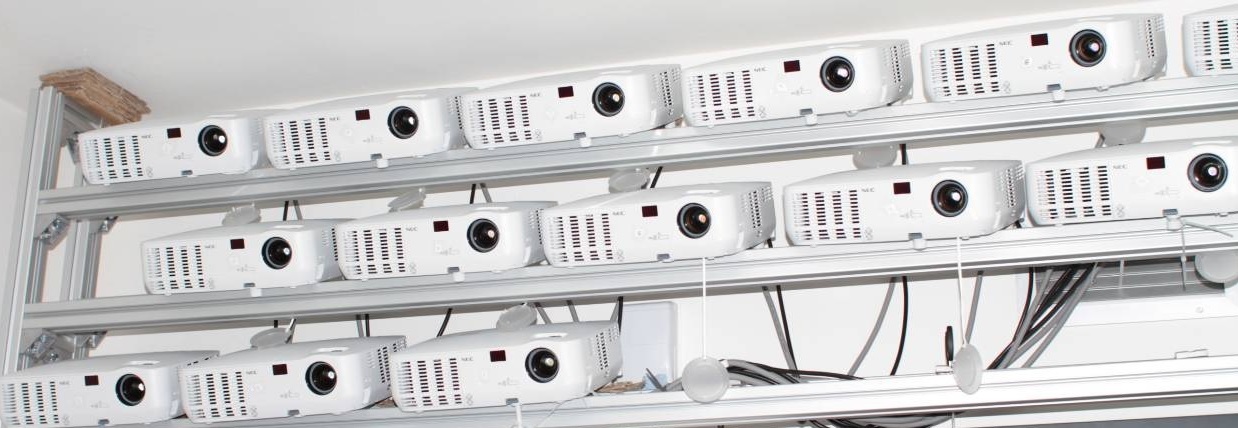Multi-view Display
Autostereoscopic Multi-view Display
A 2010 VEIV EngD Group Project by Tim Scully, Sarat Babu, Christos Sakellariou, James Martin

HoloVisio display by Holografika. This involves using a multi-view display using arrays of projectors. Each projector is at a slightly different angle relative to a lenticular screen, which only allows certain projections to be seen as the viewer moves around the screen. The approximate arrangement of the projectors and screen can be seen. By orienting the projection angle for each projector, the incident rays on the screen are unique. The lenticular screen is shaped in such a way that it refracts the light back so it is best viewed at a particular angle. In order to recreate the 3D effect, each eye of the observer needs to see a slightly different image. When viewed from different positions, two images of a 3D scene will differ due to the parallax effect. Objects closer to the viewer will have a greater change between each eye’s image, and those further away will look more similar to each other.A good quality lenticular screen will allow each projection from each projector to be more distinguishable from each other, hence leading to a more impressive 3D effect.
There are two methods of construction of this multi-view system: Back- and front-projection. The rear-projection method requires two lenticular sheets with a non-diffuse layer sandwiched in between, whereas the front-projection method requires one lenticular sheet with a retro-reflective material behind it. Due to the simpler screen construction and also reduced room.